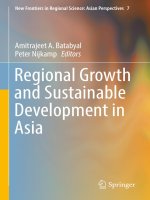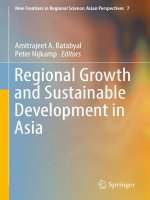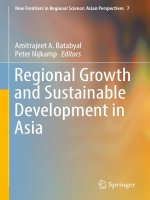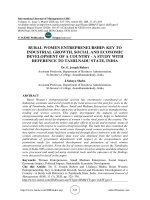Economic growth and economic development 43
Bạn đang xem bản rút gọn của tài liệu. Xem và tải ngay bản đầy đủ của tài liệu tại đây (70.19 KB, 1 trang )
Introduction to Modern Economic Growth
and policies on economic incentives and why, for example, they have been growthenhancing in the former two countries, but not in Nigeria. The intimate link between
fundamental causes and institutions highlighted by this discussion motivates the last
part of the book, which is devoted to the political economy of growth, that is, to
the study of how institutions affect growth and why they differ across countries.
An important caveat should be noted at this point. Discussions of geography,
institutions and culture can sometimes be carried out without explicit reference
to growth models or even to growth empirics. After all, this is what many noneconomist social scientists do. However, fundamental causes can only have a big
impact on economic growth if they affect parameters and policies that have a firstorder influence on physical and human capital and technology. Therefore, an understanding of the mechanics of economic growth is essential for evaluating whether
candidate fundamental causes of economic growth could indeed play the role that
they are sometimes ascribed. Growth empirics plays an equally important role in
distinguishing among competing fundamental causes of cross-country income differences. It is only by formulating parsimonious models of economic growth and
confronting them with data that we can gain a better understanding of both the
proximate and the fundamental causes of economic growth.
1.8. The Agenda
This discussion points to the following set of facts and questions that are central
to an investigation of the determinants of long-run differences in income levels and
growth. The three major questions that have emerged from our brief discussion are:
(1) Why are there such large differences in income per capita and worker productivity across countries?
(2) Why do some countries grow rapidly while other countries stagnate?
(3) What sustains economic growth over long periods of time and why did
sustained growth start 200 years or so ago?
• In each case, a satisfactory answer requires a set of well-formulated models
that illustrate the mechanics of economic growth and cross-country income
differences, together with an investigation of the fundamental causes of the
29









